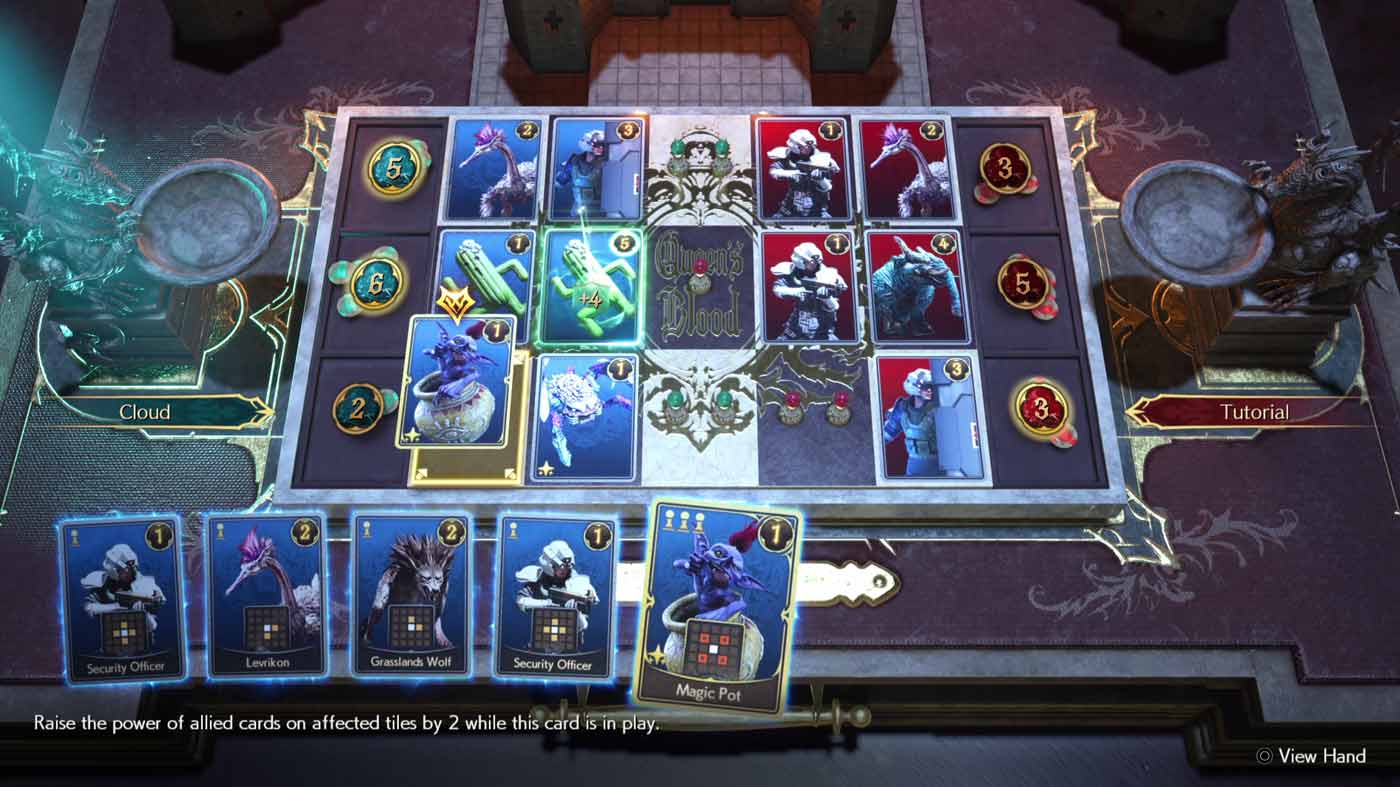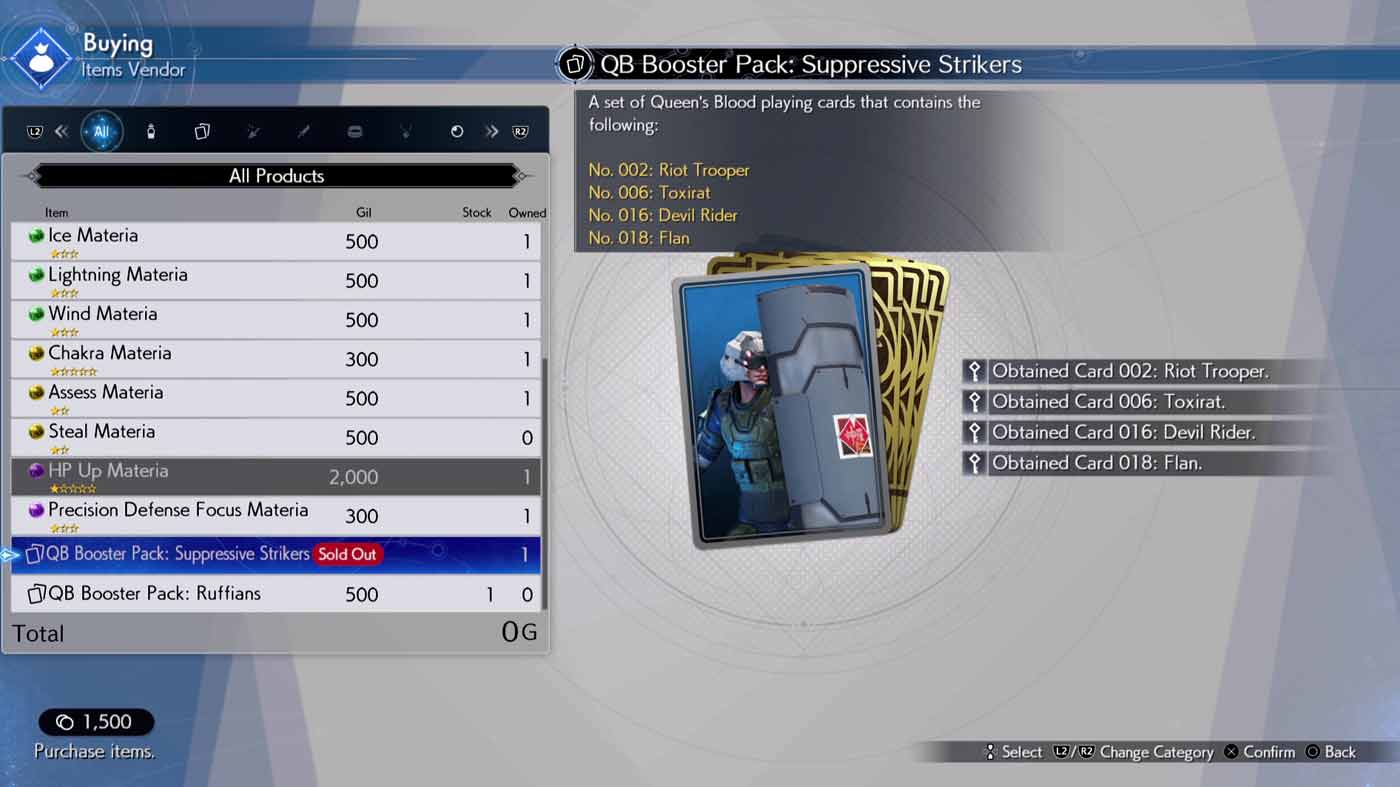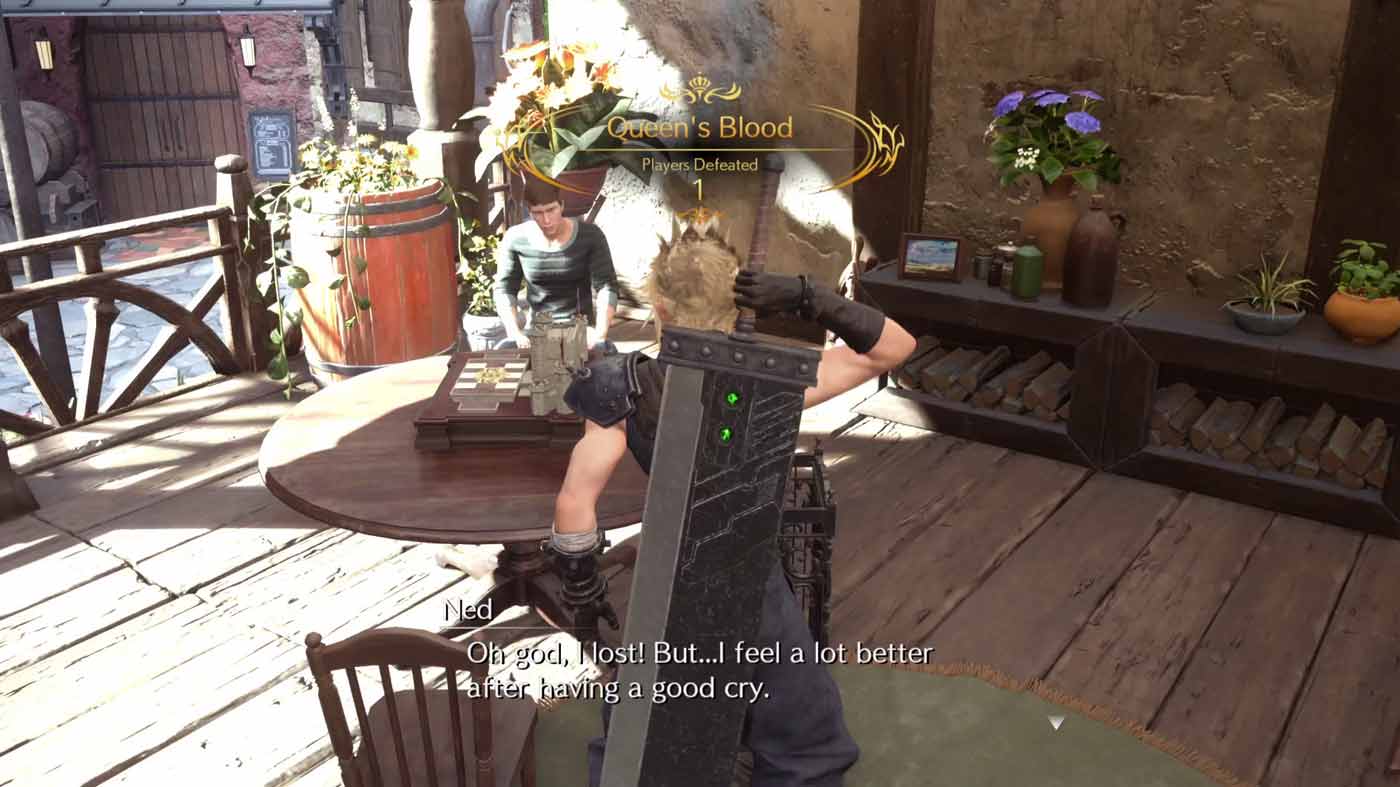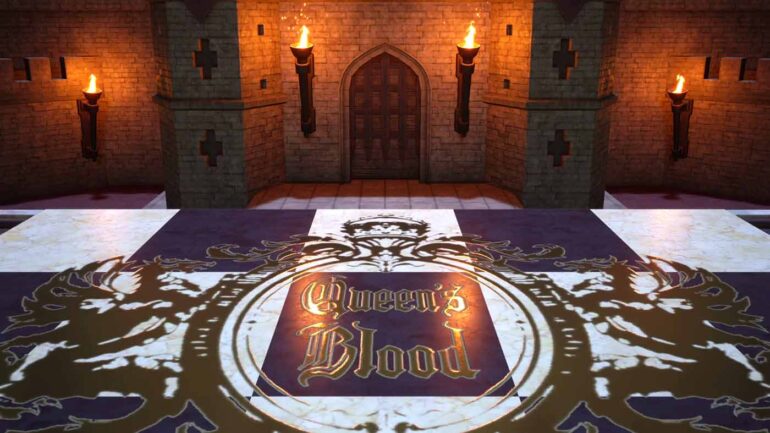Recently I was able to get hands-on with around four hours of Final Fantasy VII Rebirth, which is both not nearly enough to really appreciate the full scope and scale of the game, but also just enough time to have finally gotten my grubby paws on Queen’s Blood; the hot new deckbuilding mini-game being introduced in this middle entry in the Final Fantasy VII Remake Project.
If you’re anything like me and grew up playing the PS1-era of Final Fantasy games, there’s a good chance you cut your teeth on the likes of Final Fantasy VIII’s Triple Triad or even Final Fantasy IX’s Tetra Master. These card games were embedded into their respective titles as world-spanning phenomena with so much virtual cultural impact that a random citizen ready to throw down their collectible cardboard was always right around the corner, and they remain embedded in my own mind just as severely. That’s why Queen’s Blood is already a big problem. After just the smallest taste, I can already foresee this thing completely derailing my playthrough of Rebirth, but good Gaia it’s going to be worth every sleepless minute.

Think those two card games I mentioned already, throw in a dash of The Witcher 3’s Gwent and you’re maybe on your way to the kind of experience that Queen’s Blood offers. Played on a board of 3×5 tiles, it’s a race to accumulate the most power on each of the three horizontal lanes by taking turns playing cards of varying power values in them. The trick, though, is that not every tile is accessible from the start and each card you play will open up a certain pattern of tiles adjacent to it for you to continue to expand, and the more powerful a card you want to play the more other cards need to be pointing to the desired tile simultaneously.
It’s maybe a difficult thing to explain without step-by-step guidance or writing far too many words, but the idea is essentially to conquer the board by expanding and creating opportunities to put increasingly powerful cards down to secure each of the lanes. The bulk of the strategy happens when you start to factor in some cards’ abilities to “enfeeble” opponent cards, reducing their power or even destroying them to reset their positions to neutral and ready to claim as your own. While I obviously only sampled very early games, the potential for some pretty wild strategies down the track is immediately clear.

Brilliantly, your final score is not the tally of all of your lane scores but only the ones where you scored higher than your opponent, meaning even if they best you on two of the three lanes, you can still attempt a win by somehow scoring higher in that final lane than their other two combined.
It’s no coincidence that Queen’s Blood feels intrinsically like a Final Fantasy card mini-game either. I had the chance to chat to both the game’s Producer (and the original Final Fantasy VII’s Director) Yoshinori Kitase as well as Game Director Naoki Hamaguchi about Final Fantasy VII Rebirth and of course wanted to pick their brains about how this all came to life. Hamaguchi-san revealed that, since Square Enix is broadly an entertainment company he was able to establish a crack team of card game enthusiasts, and very early on it was decided amongst them that the new card game needed one essential “rule” that would bring about a familiarity with those previous games. That rule turned out to be the concept of two cards creating new effects when placed next to each other – which might not sound especially high-concept but with a ruleset as different as this is from Triple Triad and Tetra Master there’s definitely value in keeping the feeling of the singular, constant action of placing cards on a grid intact.

Hamaguchi-san also tells me that Queen’s Blood is more than a distraction, and has its own ties to the game’s story to keep players engaged. While the Game Director was obviously reluctant to tell me too much, I learned that there are events that occur around the card game that introduce whole new characters and narrative beats. In our preview session, a player named Crybaby Ned was hanging out at a table in Kalm ready to invite Cloud to a game and with a specific card to unlock in reward for beating him (and making him cry, naturally). With a world full of players to challenge and plenty of shops where I can blow all of my gil on card packs, I’m very keen to explore more of what Queen’s Blood has to offer in the full game.
You can read more about my hands-on time with Final Fantasy VII Rebirth here.
Final Fantasy VII Rebirth launches exclusively on PlayStation 5 on February 29th. You can pre-order it now on Amazon for $99 with free shipping and pre-order price guarantee.



